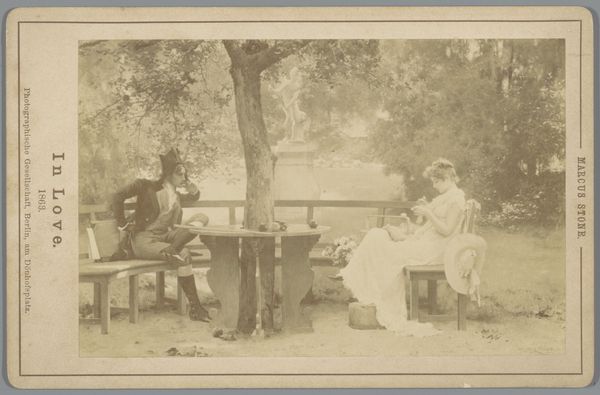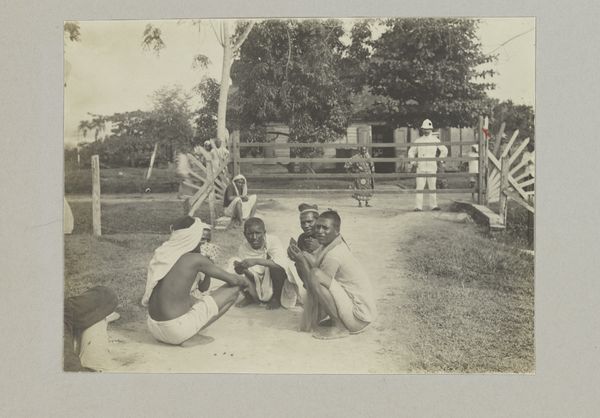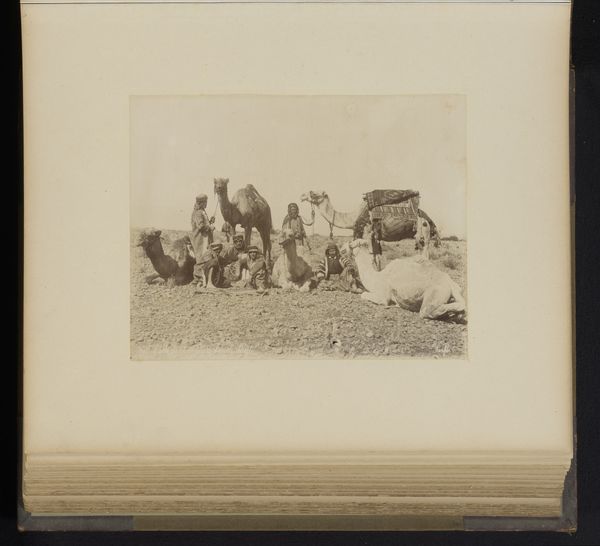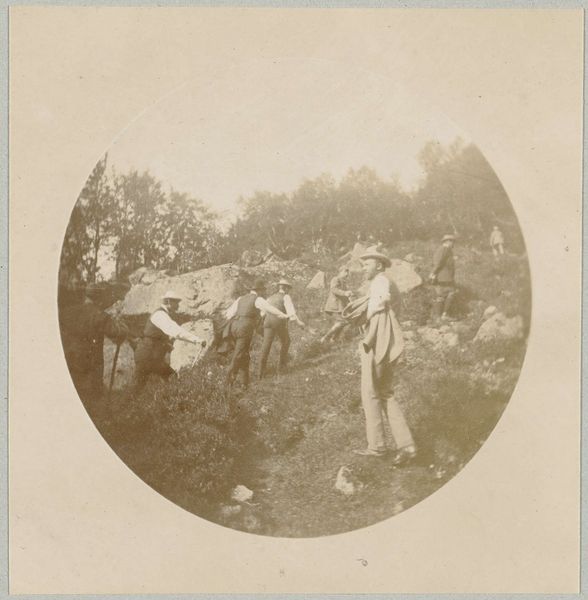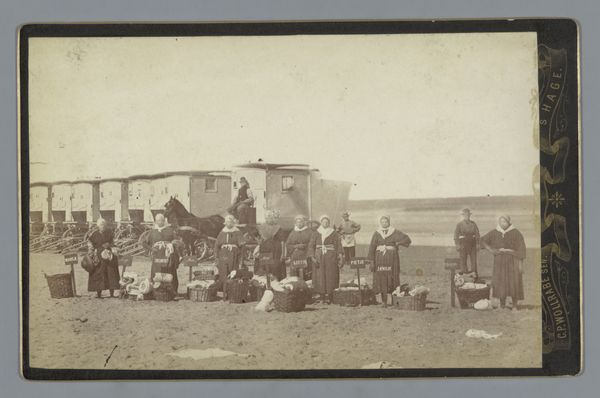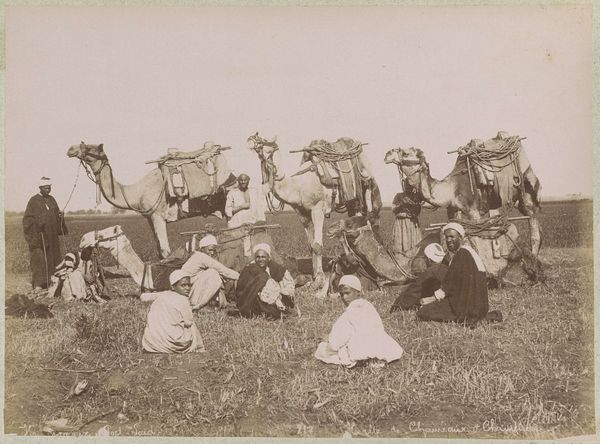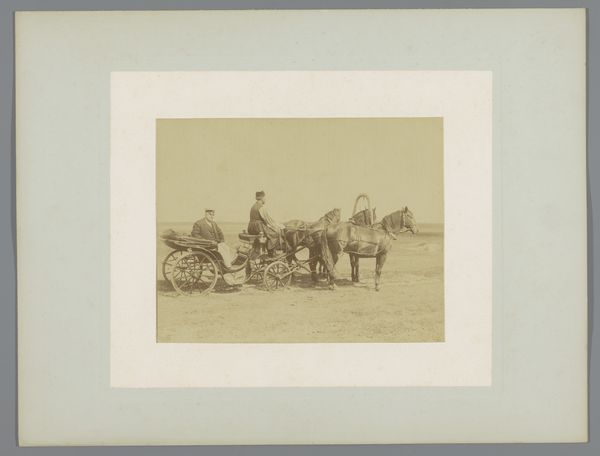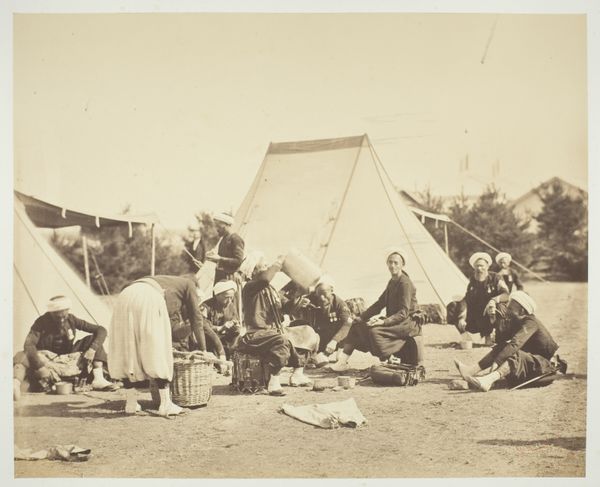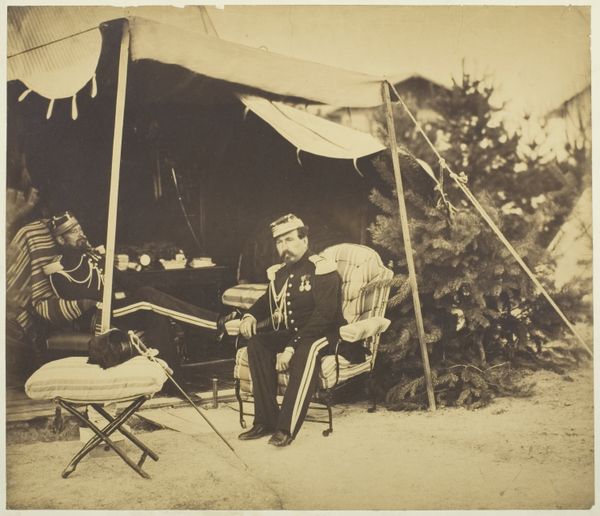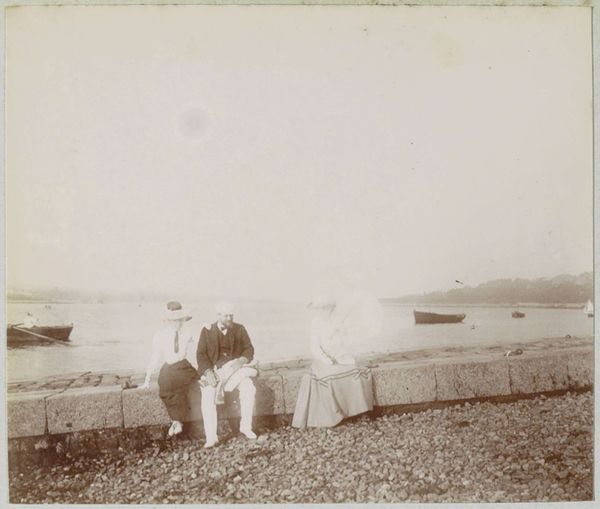
photography, gelatin-silver-print
#
portrait
#
photo of handprinted image
#
aged paper
#
print print-like
#
muted colour palette
#
pictorialism
#
ink paper printed
#
landscape
#
photography
#
folded paper
#
gelatin-silver-print
#
genre-painting
#
tonal art
#
paper medium
#
remaining negative space
Dimensions: height 89 mm, width 120 mm
Copyright: Rijks Museum: Open Domain
Curator: What a compelling image. This is a gelatin-silver print by Willem de Jong, titled "Lezende en zittende mensen op het strand," or "Reading and Sitting People on the Beach," dating from around 1895 to 1920. Editor: My first thought is that this looks like a tableau vivant. The subdued palette and blurred edges lend it a hazy, dreamlike quality, as if capturing a fleeting memory. Curator: Absolutely. De Jong's work is often associated with pictorialism, which aimed to elevate photography to the status of fine art. The focus here shifts away from sharp realism. Pictorialism often addressed notions of bourgeois leisure and consumption, with labor obscured from immediate view. The very act of choosing to represent such a scene highlights evolving social values of the time. Editor: I'm particularly drawn to the textural contrasts here. We have the rough, woven surfaces of the beach chairs juxtaposed with the smooth fabric of the women’s dresses. This tension speaks to the craftsmanship invested in both their garments and the beach equipment, suggesting a certain level of luxury and leisure only attainable through extensive networks of labor. Curator: I see how this lens can help us consider how women occupy public spaces differently during this era, reading, thinking, and performing certain types of femininity through their dress and demeanor. Notice the hats! They speak volumes about both individual identity and the gendered expectations of the time. The choice to capture them, seated, relaxing in beach chairs rather than in more conventional settings speaks to evolving freedoms, and subtle, subversive agency. Editor: Right. The repetitive forms of the woven chairs draw the eye deep into the scene. We could argue the serial production of this leisure equipment is linked to specific industrialized material processes, and also point to how consumption became democratized for a segment of society. And, as gelatin-silver prints required particular chemical processes and expertise, the image itself bears the traces of its production. Curator: Thinking about the social and political conditions of late 19th, early 20th-century Netherlands enriches how we interpret this photograph. De Jong was working within an emerging culture, shaped by burgeoning middle classes who sought out seaside escapes for pleasure and self-improvement. This work functions almost like a documentary fragment of social class, the gender roles in practice. Editor: The material and method, as a photographic print of that era, underscores its connection to both a chemical process and, for viewers now, as something preserved, handled, and aged as an object through time. It’s a fascinating confluence of people, places, objects, and processes caught in one image. Curator: Exactly, understanding the nuanced contexts around this image empowers viewers to appreciate its lasting cultural significance. Editor: A photograph can give us such insight into these past moments; thinking materially about those contexts provides important, alternative ways to see them too.
Comments
No comments
Be the first to comment and join the conversation on the ultimate creative platform.
